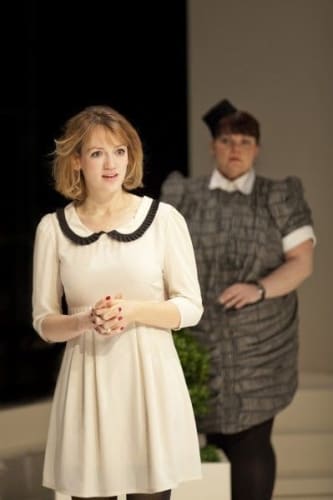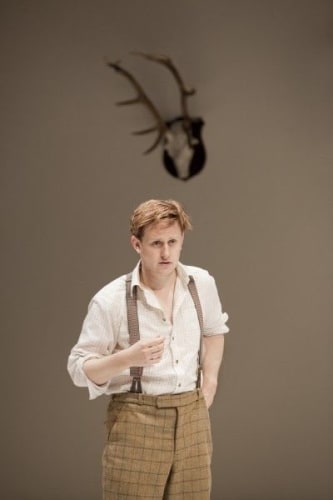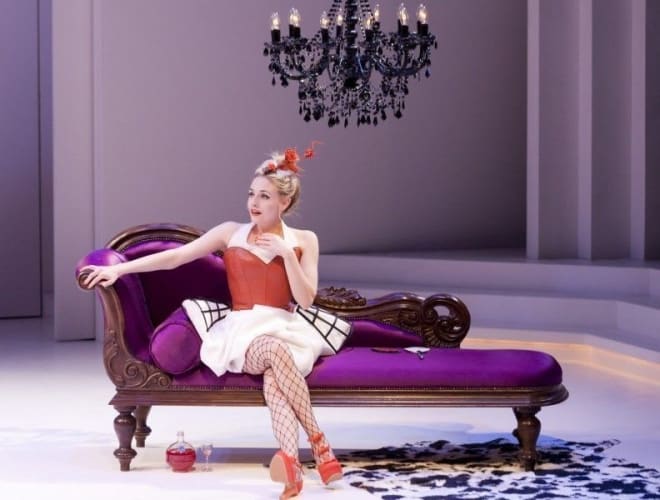This is a visually sumptuous production of The Way of the World directed by Lyndsey Turner, Associate Director at the Crucible. Naomi Wilkinson’s stunning sets and costume designs recreate the hedonistic world of early eighteenth century fashionable society, whilst making clear connections with contemporary values and mores. It is the outrageous shoes, in particular, which provide the visual link between 1700 and 2012.
Wilkinson’s elegant white set sits perfectly on the wide Crucible stage and adapts cleverly to provide a variety of contexts, including an expensive looking department store filled with designer items, an appropriate milieu for the superficial, extravagant, appearance-conscious denizens of this post Restoration world. The set also provides an actual (as well as metaphorical) window which allows the audience to observe the private goings on of a society in which reputation must be maintained at all costs.
The costume design is a delight to the eye, highly colourful, witty, outrageous, cleverly spanning the centuries with costumes (including the occasional wig) which would grace a contemporary cat walk.
However, it is Congreve’s language which places him firmly in a tradition that leads back to Shakespeare, and while the visual and inventive aspects of the production were a great help in enlivening the action and making the play more accessible, ultimately the delight of the play lies in the language, as in Lady Wishfort’s "Why, I am arrantly flayed—I look like an old peeled wall"; and, notably, in the famous contract scene between Mirabel and Millament, when she eventually agrees to "dwindle into a wife." While the actors all deal well with the complexities of the sentence structure, I would occasionally have welcomed more variety of emphasis and pointing up of the language, to make the meaning clearer and to derive more fun from the wit.
It is a play unfamiliar, I would assume, to non-theatre specialists. The audience could therefore have done with more help with the range of characters and the complexity of the plot. The labelling that was effective during the opening sequence could have been extended to the introduction of characters and key moments in the action. This would have been reminiscent of silent film conventions, as used in Tony Richardson’s Tom Jones and George Roy Hill’s The Sting.
There is an outstanding performance by Samuel Barnett as the fop Witwoud. He has completely absorbed the performance conventions of Restoration Comedy, has wonderful comic timing in both speech and action, and is endlesslessly inventive in small details. It is gratifying to see how extensive his CV is after his excellent early performance in The History Boys. Equally of note is Ben Lloyd Hughes as Mirabel, who gives an accomplished and mature performance in his professional stage debut. It is a pleasure to see Rachel Lumberg on stage again. She falls into the category of actors who have a real facility for complex language.
All the women look wonderful in their couturier costumes. Deborah Findley as Lady Wishfort seems younger, thinner and more glamorous than usual, but this may be appropriate in a production directed and designed by women. Attractive music is provided by composer and sound designer Tom Mills.


